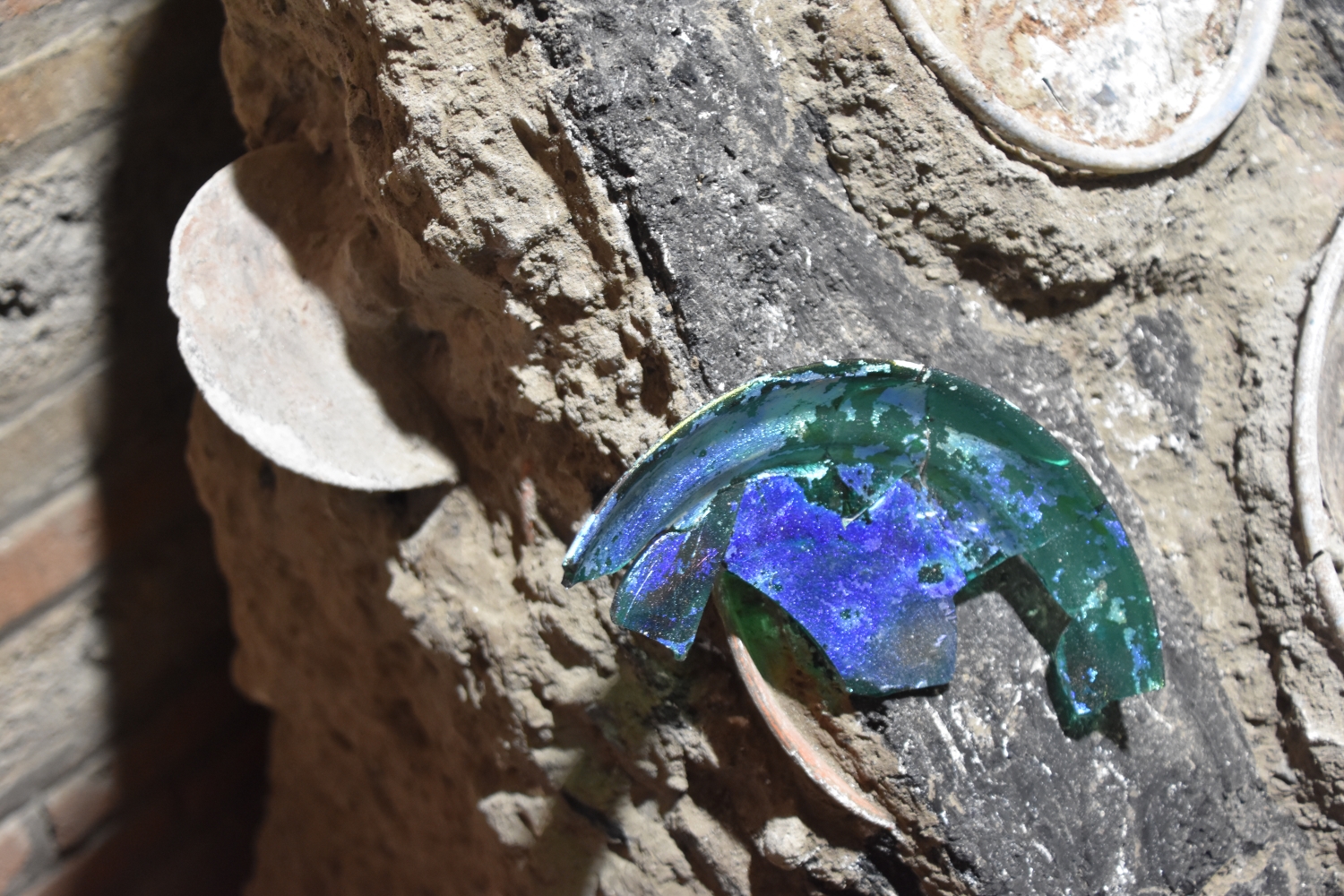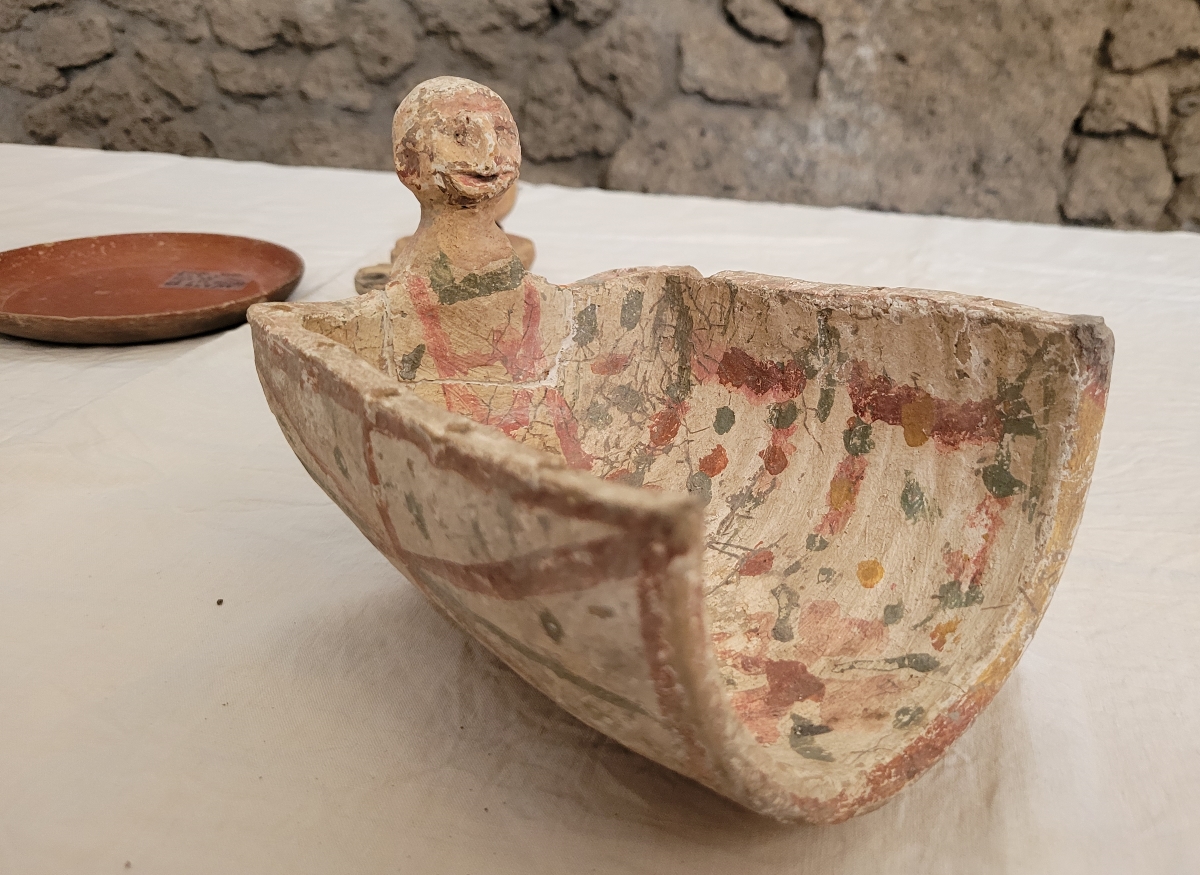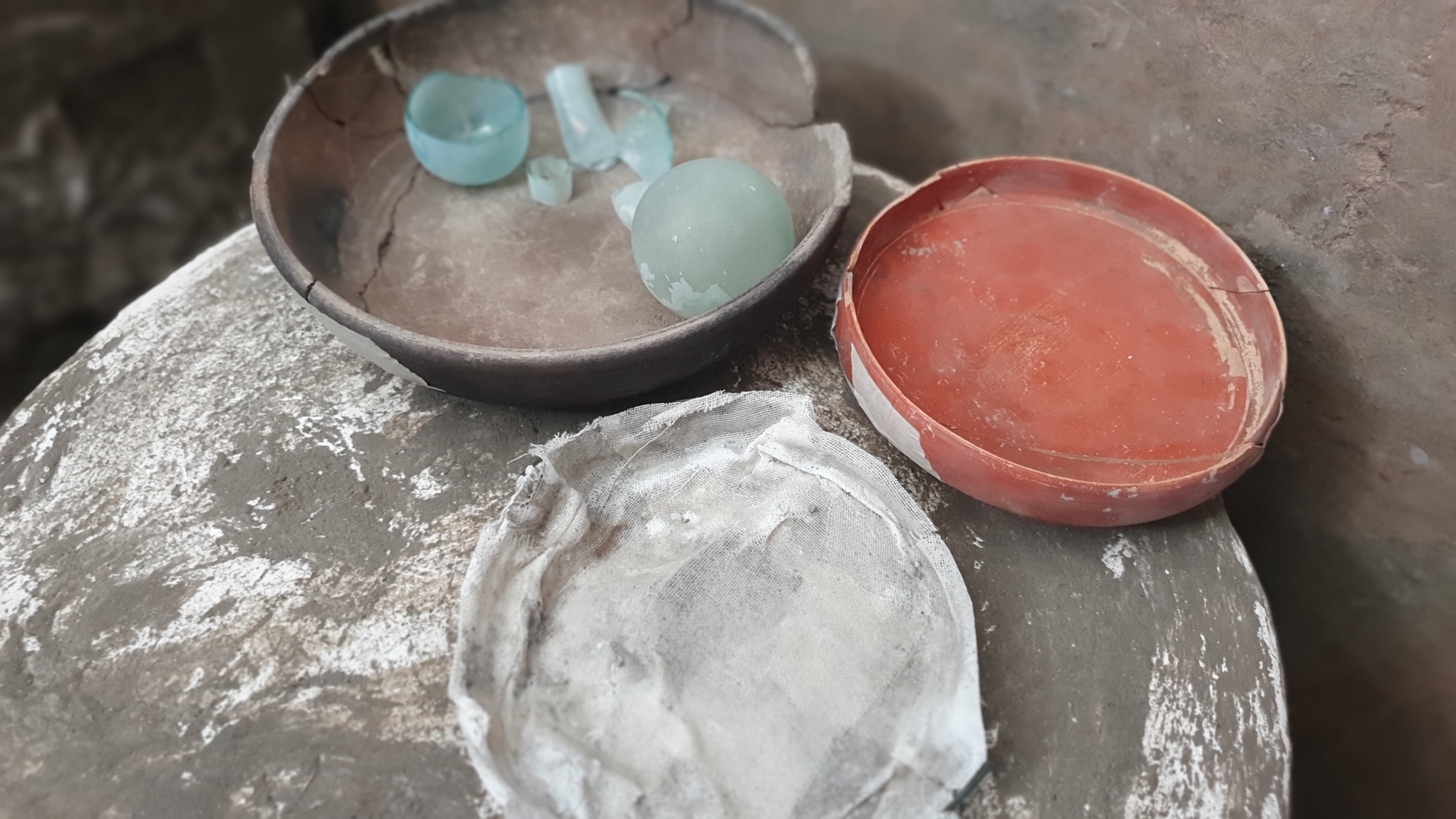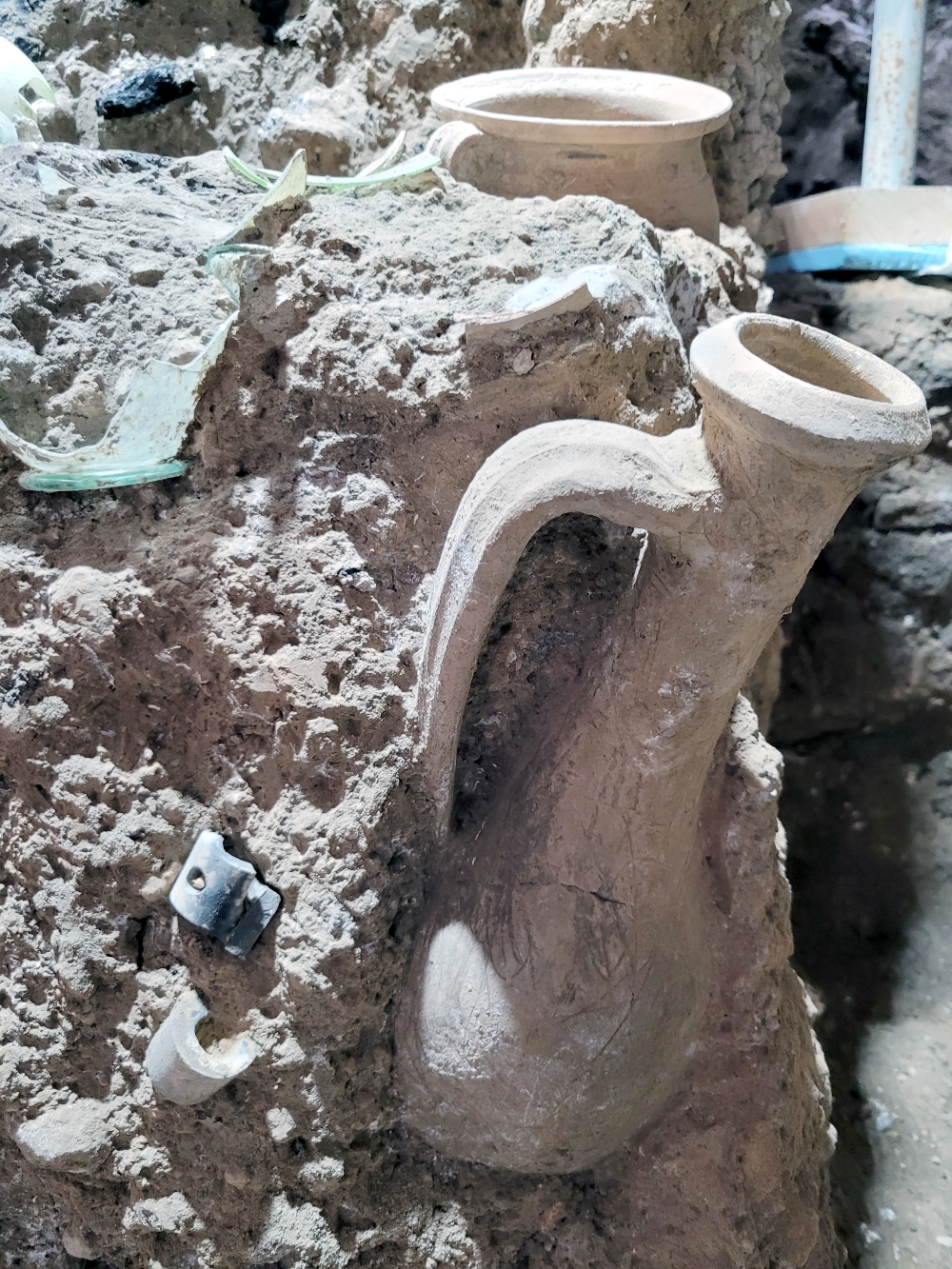These are the new, exciting testimonies of the last Pompeii that resurfaces with its motionless life in the northern area in the so-called Regio V, one of the great districts of the ancient city, already affected by excavations in 2018, as part of the larger maintenance intervention and securing the excavation fronts along the perimeter of the unexcavated area of the city, envisaged by the Great Pompeii Project.

The wooden wardrobe found in the Domus del Larario, Regio V, Pompeii | Courtesy Archaeological Park of Pompeii
A photograph of the instant of the escape that makes space between the furniture and the ceramic forms found in the same position in which they must have been at the moment of the eruption.
The environments found tell the story of the life of the lower middle class of the city, of people who often lived in rent or in any case on the margins of the more affluent classes. Already in 2018 in this area, which is accessed from the alley of Lucrezio Frontone, a luxurious richly decorated lararium saw the light with, on one wall, a sacred niche to the “Lares”, tutelary deities of the house and, below, two large “agatodemoni” snakes (benevolent demons), a symbol of good luck and prosperity.
In one of the rooms that have recently come to light, parts of a bed frame are preserved, the volume of the pillow, of which the texture of the fabric is still visible. The bed consists of a very simple cot, with no decorative elements, removable and without a mattress. We could imagine that the guests lay on a network of ropes, of which traces are preserved in the cast made, and on a fabric placed on top. Next to the bed, time has returned a wooden trunk divided in half, left open at the moment of the escape and onto which, in the collapse, beams and boards of the attic above were poured. Inside, a terra cotta saucer (a type of thin Roman table pottery) and a double-spouted oil lamp with a bas-relief depicting the transformation of Zeus into an eagle were found. But there is more.
A circular table with three legs. Above there is still a ceramic cup with two glass cruets, a sealed plate and one in glass. At the foot of the table, time has spared a glass cruet and a series of amphorae that prove how the room was inhabited every day.

A cradle-shaped perfume burner found in Pompeii | Courtesy Archaeological Park of Pompeii
But what do we know about the inhabitants of this mansion?
“In the Roman Empire – explains the director of the Archaeological Park, Gabriel Zuchtriegel – there was a large slice of the population who fought for their social status and for which the ‘daily bread’ was anything but taken for granted. A vulnerable class during political crises and famines, but also ambitious to climb the social ladder. In the house of the Lararium in Pompeii, it was possible to have the courtyard adorned with the lararium and the tank for the cistern with exceptional paintings, but evidently the means were not enough to decorate the five rooms of the house, one of which served as a warehouse. In the other rooms, two on the upper floor and reachable via a mezzanine, we found a mixture of objects, some of precious materials such as bronze and glass, others of daily use. The wooden furniture of which it was possible to make casts are extremely simple. We do not know the inhabitants of the house, but surely the culture of idleness that inspired the wonderful decoration of the courtyard was more of a future they dreamed of than a lived reality. “

Saucers and cruets found in Pompeii, Regio V | Courtesy Archaeological Park of Pompeii
Outside the room, in the south corner of the short hallway, in front of the kitchen, the cinerite has returned a wooden wardrobe with at least four doors, partially compromised by the collapse of the floor above and remained closed with its equipment for at least two thousand years. This piece of furniture about two meters high, with at least five shelves, still contains jugs, amphorae and glass plates, table and kitchen ceramics, a small set of bronze shapes, two bronze jugs, one of which with a handle with applique surmounting in the shape of a sphinx and lower attachment to the lion’s head. Behind the Domus del lararium, an environment belonging to another housing unit was investigated, which returned the partial collapse of the false ceiling in which, through the technique of plaster casts, it was possible to recover the detailed volume of the ribbon contained in the heart of the false ceiling mortar.
“Pompeii really does not cease to amaze – commented the Minister of Culture, Dario Franceschini – and it is a beautiful story of redemption, the demonstration that when in Italy you work as a team, you invest in young people, in research and innovation. extraordinary results “.

Wooden wardrobe found in Pompeii, Detail | Courtesy Archaeological Park of Pompeii

